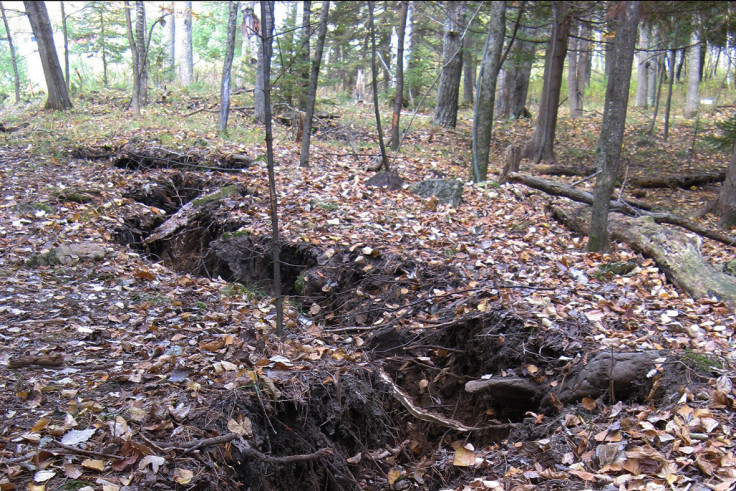Menominee Crack: Giant 110m earth breach in Michigan may be caused by removal of just one tree

The Menominee Crack may have been caused by the removal of a single tree just days before the breach occured. The Menominee Crack is the name given to the 110m-long crack in the ground at a forest in Menominee, Michigan, which occurred on 4 October 2010. Scientists believe the crack could be what is known as a 'pop-up'.
The study, published in the journal Seismological Society of America, represents the first time that steps have been taken towards learning the origins of the crack. The researchers suggest it is a 'pop-up', where heavy glaciers once pushed down on the bedrock, causing a giant tilt in the earth – similar to a see-saw situation, where only one side has someone sitting on it.
The geologists used a process known as seismic refraction to reach their conclusion. This involves measuring the waves of energy moving through the Earth's crust. They found that the seismic waves moved slowly when crossing the broken rock and faster when it did not have any gaps in its path at all. This is exactly the same type of reaction they would have expected to see if the crack was caused by a pop-up.

However, if their theory is correct, this would be the only pop-up site with no major triggers – such as a nearby quarry moving heavy rock.
"As far as we can tell, this is a one-of-a-kind event," said Wayne Pennington, lead author of the study. "One of our reasons for publishing this was that in our search of the literature, we could find no other mention of modern pop-ups that didn't occur at something like the base of a quarry, where people had removed massive amounts of rock earlier."
After digging, the scientists identified one possible explanation for the pop-up. They discovered a 2,000kg tree had been removed from the site just days before the crack. The suggestion in the report is that the large tree – which is actually a very small weight change to cause a pop-up, despite being comparatively heavy to humans – may have been the final straw for the under-layer of rock, as it was on the precipice of a pop-up 11,000 years ago before the last of the glaciers retreated.
"There's a 60% chance that this explanation we provide is the right one," said Pennington. "But since we haven't seen this kind of thing elsewhere, and the tree is such a small effect, we wonder if there might be something else."
The crack in 2010 was Michigan Upper Peninsula's first 'technical' earthquake – despite it measuring less than one on the Richter scale. Until now, the cause of the Menominee Crack has been a mystery.
More about holes in the earth
© Copyright IBTimes 2025. All rights reserved.






















